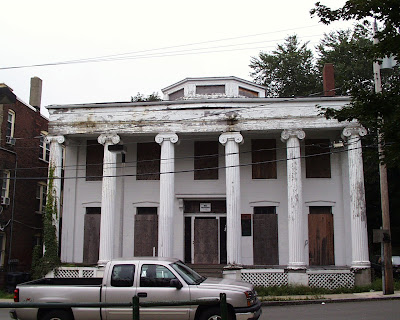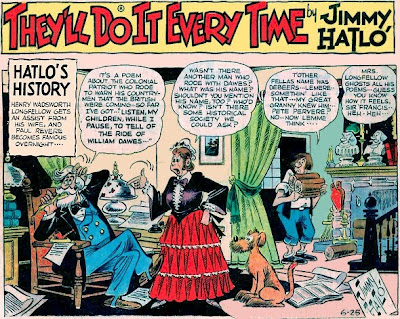The annual clean-up of Alvah Kittredge Square is scheduled for this weekend. From 9 to 11 am this Saturday, 24 April 2010, the "neighborhood scrub down" takes place. A sweet little announcement came to the neighborhood email list asking the neighbors to turn out, to bring flowers to plant and
 ideas for an after-school program, and to shovel around some city-provided mulch.
ideas for an after-school program, and to shovel around some city-provided mulch.If there is enough time and willing hands, folk will walk down to Highland Ave and Centre Street to dress up that corner. The email even includes a pretty picture from Roxbury Highland's glory days.
The Friends of AK Park report they have secured commitment of significant funding from several foundations, have received a promise of help from Mayor Menino, and are confident of additional funding for a reconstruction of the park.
That's not all. The Project Review Committee of Highland Park is considering plans for the construction of a new rowhouse, "a landmark green building, producing more clean energy than it consumes" on the square at the corner of Highland and Linwood streets.
But, wait ... there's still more. It seems that the community garden at Alvah Kittredge Square is soon to be upgraded with a water supply, a concrete walk-way, a (wrought-iron!) fence and gate, and division into thirteen garden plots.
It's been a struggle over the years, but with the development of the apartment buildings facing the square, the investment of many owners and renters, the work of Historic Boston with the rowhouses on the square, the community garden, and other efforts, Alvah Kittredge Square has come a long way.
This poor derelict presides over the square from its address of 10 Linwood Street. It is a wreck and it continues to slide toward destruction right before our eyes. Here is the facade on a recent morning, propped up with scaffolding.
Here are photographs of the rear of the building and of its west side.
In a photograph from the web site of the National Trust for Historic Preservation, dated July 2004, the Alvah Kittredge House looked like this.
 Given the current scandalous neglect, in a very few more years there will be nothing left of this historic treasure to restore.
Given the current scandalous neglect, in a very few more years there will be nothing left of this historic treasure to restore.The Roxbury Action Program (RAP)—whose name adorns the front of the building—owned this house in the '70s, '80s, and '90s. Preoccupied elsewhere in the neighborhood, RAP sat on the house and allowed it to deteriorate like any feckless, absentee landlord. Since that time RAP has pulled up stakes from 10 Linwood Street and has conveyed the property (probably in 1999) to Alexander Leroy who is trustee of something called the Linwood St Realty Trust.
10 Linwood Street is listed with the city as commercial property, assessed at $179,900.00, with an annual property tax of $5,285.46 for fiscal year 2010—plus interest and fees of $271.95, as nothing has been paid against the tax bill this year. See the roller-coaster valuation history at the City of Boston On-line Assessing web site.
Mr. Leroy, and his do-nothing trust, are dreadfully misusing this historic house and the neighborhood in which it sits, just as the Roxbury Action Program did when it was the custodian.
Diligent neighbors can plant flowers and plan gardens, committed owners can invest, build, and renovate, and responsible and successful charities can lend a hand.
But, until Linwood St Realty takes its civic duty seriously, Alvah Kittredge Square will continue to be taunted by the irresponsibility manifested in this wreck.
Or, Alexander Leroy & trust can get out of the way and convey this piece of historic Fort Hill to someone who can do the job.
This status quo is shameful.
An addendum: On page 40 of this Notice of Taking, [1.465KB pdf] the Collector-Treasurer announces that it is his "intention to take for the City of Boston On Tuesday, the Fifteenth day of December, 2009" 10 Linwood Street, among other "parcel(s) of real estate for non-payment, after demand, of the taxes thereon" of $5,975.20.



